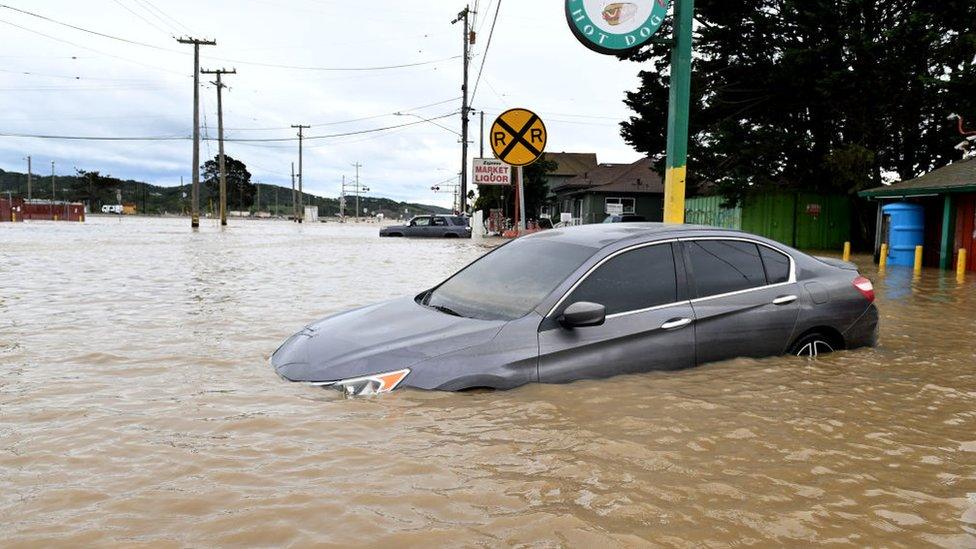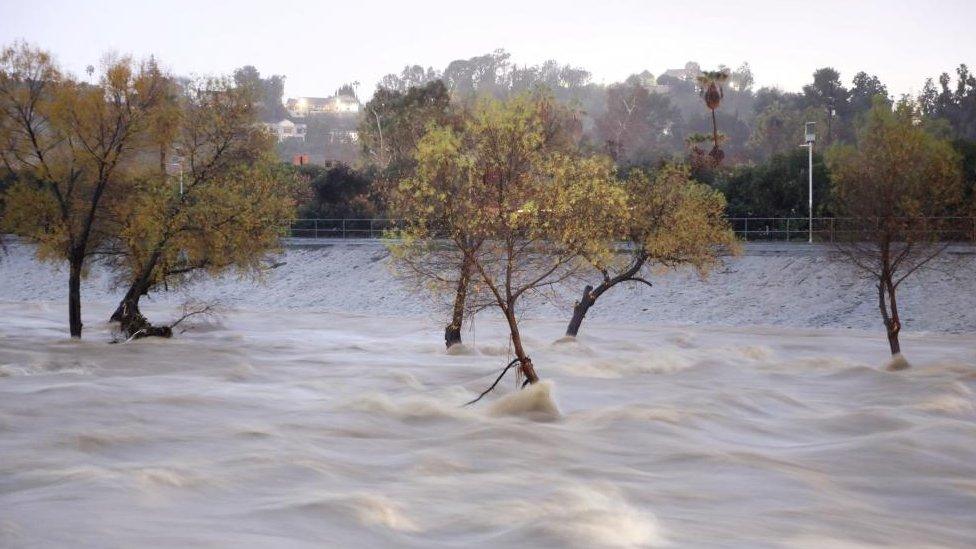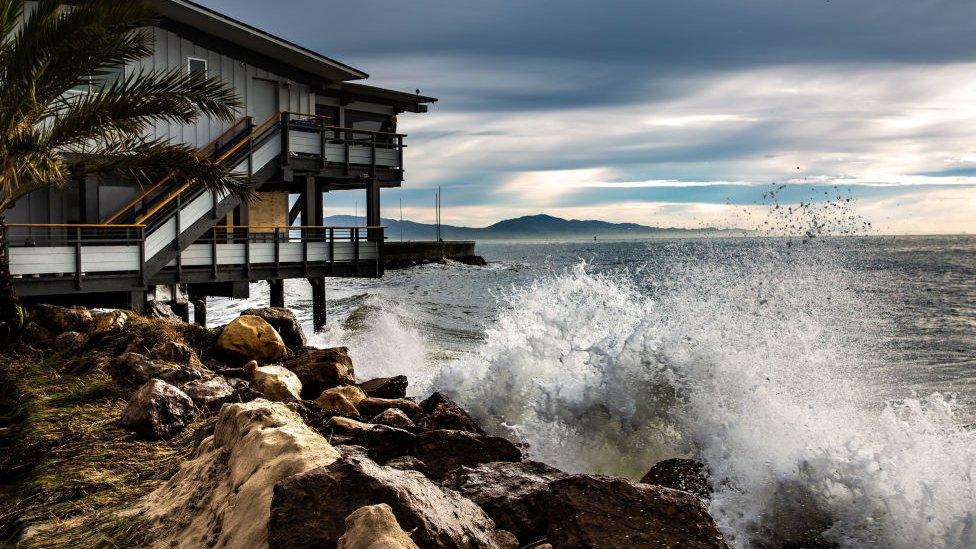California lifts some water restrictions after storms and floods
- Published

The state's years-long drought is not over, but right now residents are flush with water
California's stormy winter, which has brought severe flooding and landslides to the state, has led some local officials to lift water rules.
Water conservation restrictions have been relaxed for nearly seven million people in Southern California after the state's 11th atmospheric river this season helped ease drought.
But experts cautioned drought remains a long-term concern for the state.
"Dry conditions could return as soon as next year," local officials said.
Excess heat in the atmosphere is taking more moisture out of the earth and worsening droughts, though not all droughts are caused by climate change.
The Metropolitan Water District of Southern California said on Wednesday it would no longer require emergency restrictions on water use - which limited outdoor watering to one day a week and had been in place since June 2022 - for parts of Los Angeles, Ventura and San Bernardino counties.
Pool dangles off cliff after California landslide
California is "in much better shape this year compared to the same time last year", said Brad Pugh, a meteorologist with the National Oceanic and Atmospheric Administration's Climate Prediction Center.
He noted that in March 2022, all of California was experiencing drought, while now only 36% of the state is experiencing dry conditions.
"That's a result of the very wet winter we've had. We've seen a very favourable response in the reservoirs throughout California," he said, adding that most were at or above historical averages.
Another atmospheric river is predicted to hit the state next week, while snowpack will keep melting into the spring, continuing to ease drought concerns, Mr Pugh said.
Significant challenges remained for the region's main water source, the Colorado River, the Metropolitan Water District of Southern California warned.
"Metropolitan continues to call on residents and businesses across the region to use water as efficiently as possible to refill storage and prepare for potential steep cuts to supplies from the Colorado River," water district officials said.
The Colorado River provides drinking water to more than 40 million people in the seven Western states, including California, but decades of drought in the region has reduced the river's flow substantially, while states have used more water than has been sustainable.
The US government has tasked Western states that rely on the river to come up with a plan to reduce usage by one-third of the river's yearly average flow.
A series of storms have battered California this winter, blanketing the state's Sierra Nevada mountains with snow and flooding coastal roads.
At least 13 people have died amid storms that began late February.
While visiting flood damage on the central coast of California this week, Gov. Gavin Newsom said the state was experiencing "weather whiplash".
"If anyone has any doubt about Mother Nature and her fury, if anyone has any doubt about what this is all about in terms of what's happening to the climate and the changes that we are experiencing, come to California," he said.
Related topics
- Published10 January 2023

- Published13 March 2023
